DLL Physics
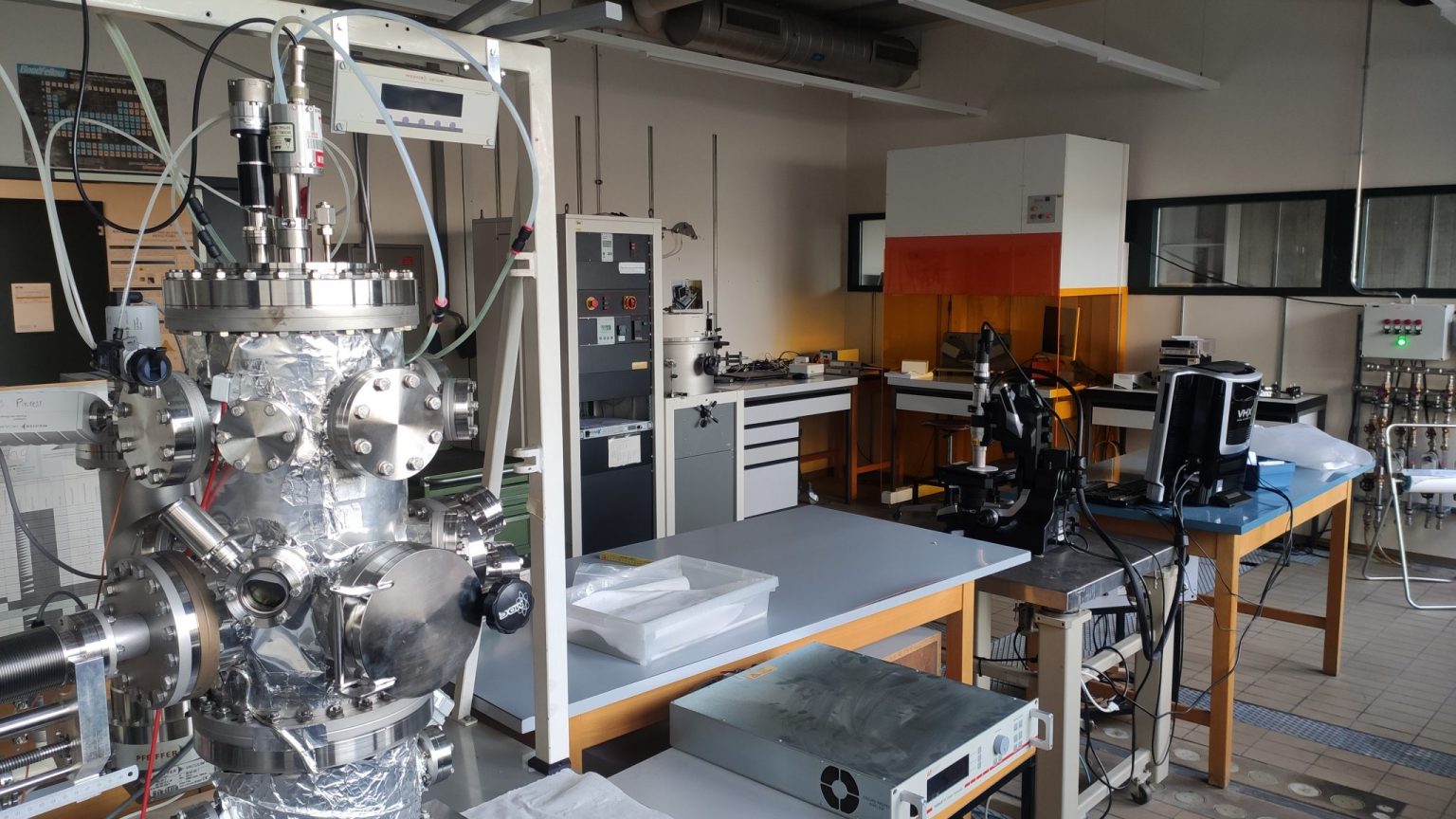
The Discovery Learning Programme in Physics gathers a series of individual experiments on which groups of students work alternately. The number of experiments available allows the organization of a program adapted to the needs of the sections. For example, it can address topics such as:
• Introduction to experimental physics and metrology
• Physics of built environment
• Transportation physics
• Ecology
• Atomic physics and particle accelerators
• Biophysics
• Microelectronics
• Renewable energy sources
The current experience collection is continuously updated and completed based on new requests to best meet the expectations of the different sections.
The system studied in this experiment is a disc that can rotate around its vertical axis. Its movement is described by the angle of rotation Θ . It is subjected to friction forces, produced by a magnetic brake, which is assumed to be viscous. It can be excited by an external force produced by an electric motor. Free or forced oscillations are obtained and can be analyzed on plots recorded by data acquisition.
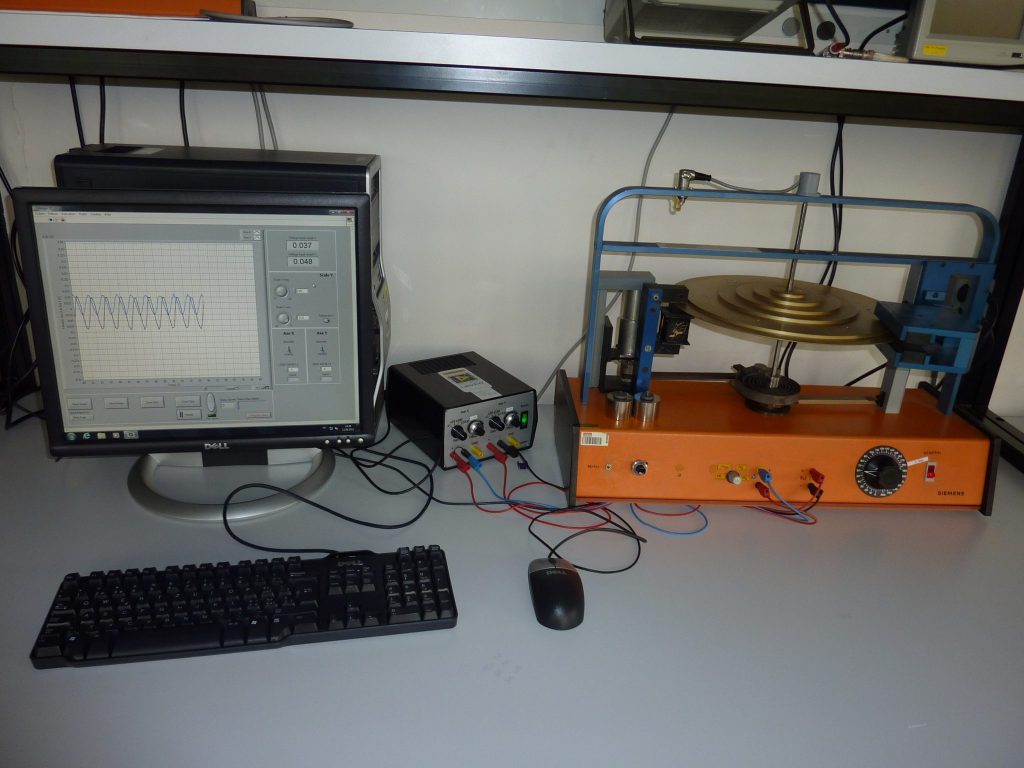
The sun is a virtually inexhaustible source of energy. Direct solar input can reach up to 1000 W/m2 at the earth’s surface. One possible way of exploiting this energy is to convert it into electricity by means of photovoltaic collectors composed of semiconductors.
In this module, students analyze the operation of various monocrystalline, polycrystalline and amorphous silicon sensors. They analyse the I/V characteristics and the maximum electrical power and their change according to the light intensity and wavelength of the light.
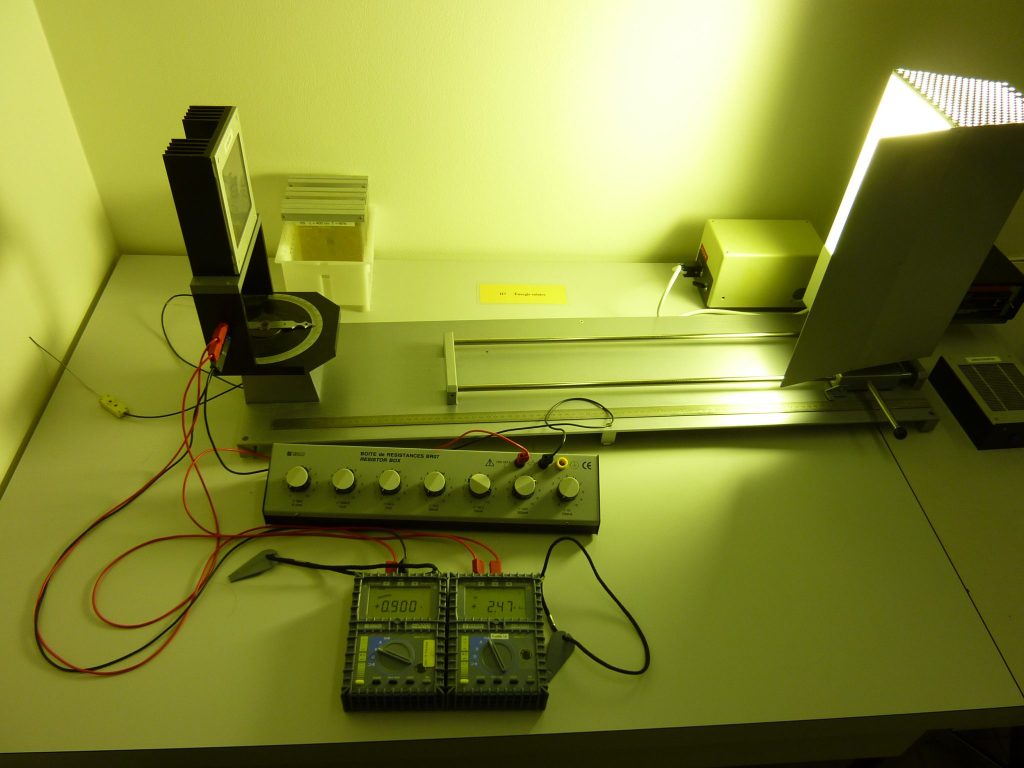
A fuel cell converts hydrogen and oxygen into water using the energy of the reaction to generate electricity. In this experiment, students analyse the operation of fuel cells with polymer electrolyte by measuring their performance: maximum power, efficiency. They study the production of hydrogen fuel by electrolysis of water. Thus, they can deduce the overall efficiency of the complete electric power generation cycle by the electrolysis + fuel cell process.
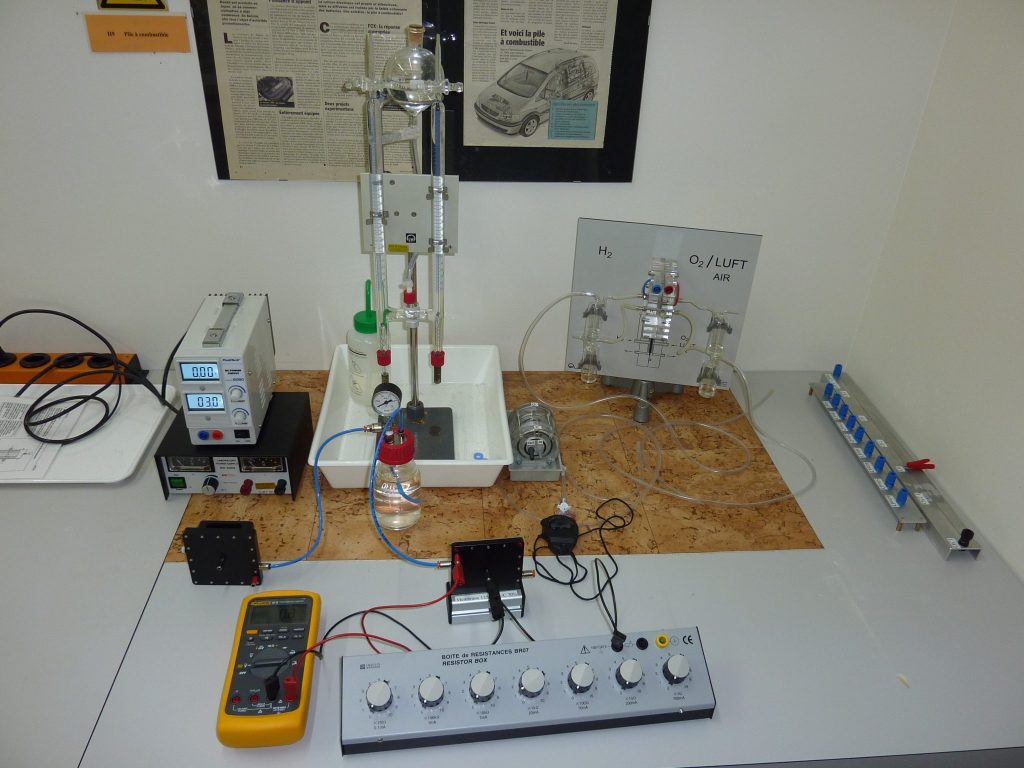
This experience allows to see a practical application of the basic courses of thermodynamics.
The thermodynamic cycle of Stirling is studied here. Pressure-volume cycles are recorded graphically. The performance of a hot air engine is measured at different rotational speeds. The yields of a refrigerating machine and then a heat pump are then studied according to temperature.
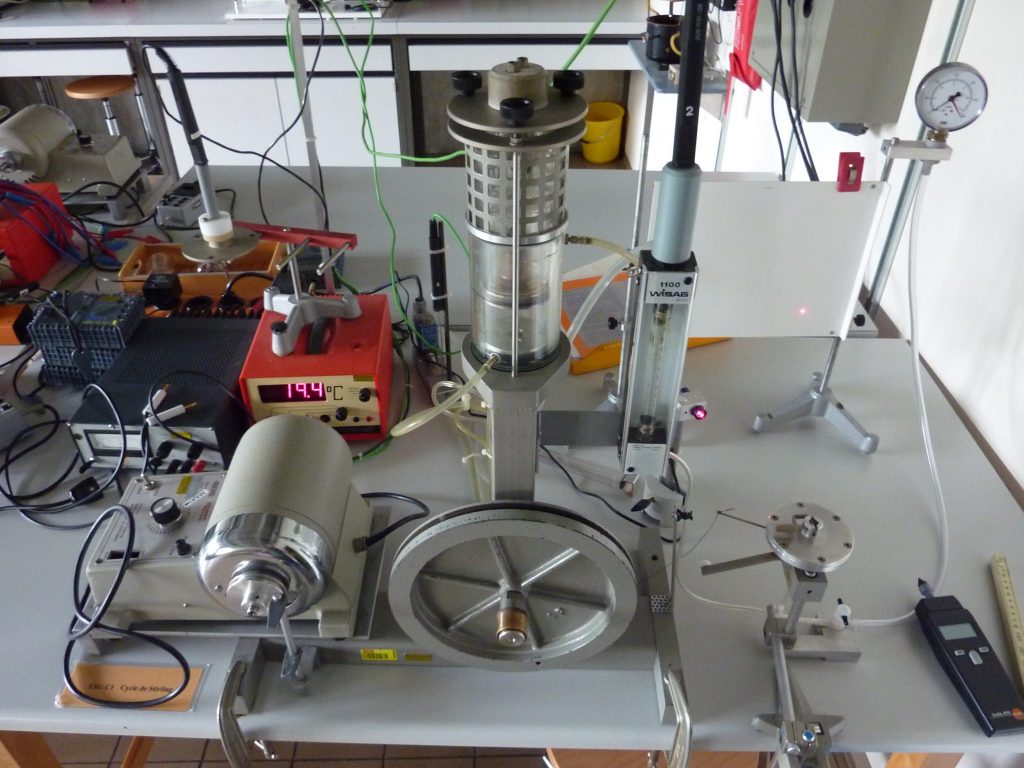
When a solid, which cannot move, is subjected to an external stress system, it responds to this stress with deformation. For low stresses, the deformation is instantaneous, proportional to the stress and returns to zero when the stress is removed. It’s called elastic deformation.
Anelasticity is a reversible deformation but it is not linearly proportional to the stress and depends on time with a certain relaxation time. This relaxation time can be measured by producing periodic vibration in the sample and measuring the logarithmic decay of the vibration amplitude, i.e. the damping coefficient. In this experiment, we measure the dynamic elastic module and the damping coefficient that are related to the Snoek relaxation (diffusion of C in Nb) as a function of temperature.
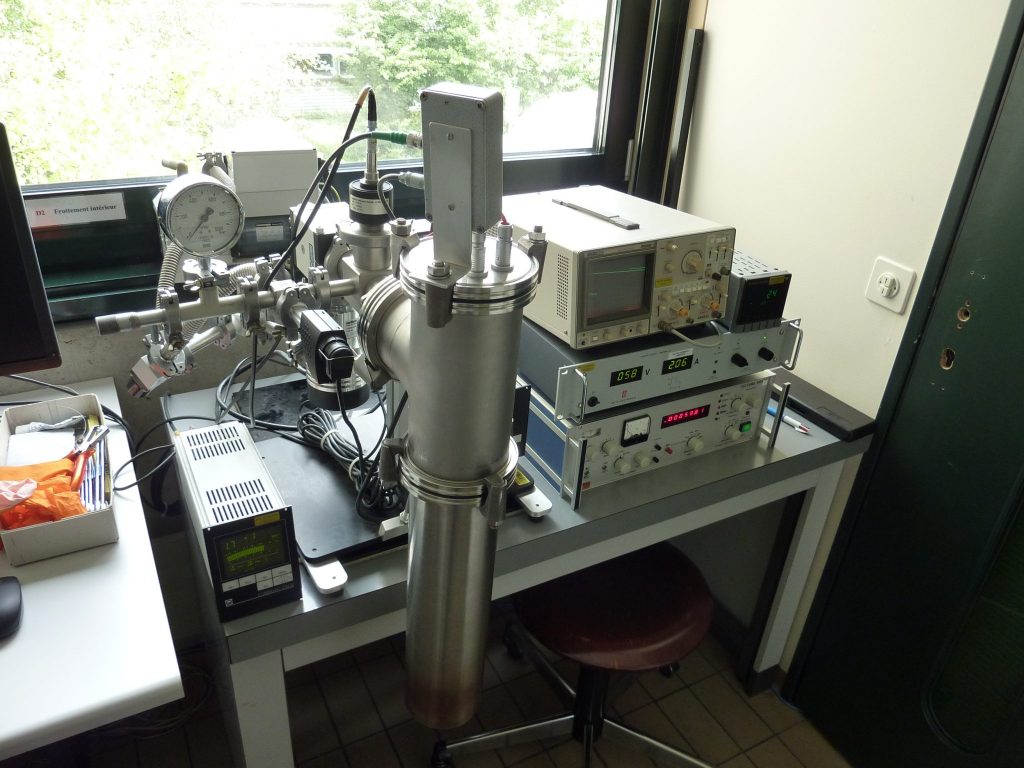
Interferometry is the study and use of the phenomenon of interference due to the wave properties of light. Interference occurs when two or more coherent oscillations (of the same frequency and fixed relative phase) coexist in space and time, and overlap. Michelson’s interferometer is based on the separation of the original light beam by a beam splitter and the use of mirrors to recombine the beams. This experiment makes it possible on the one hand to measure fairly precisely the wavelength of the light produced by the laser and then to measure the magnetostriction phenomenon on a ferromagnetic bar
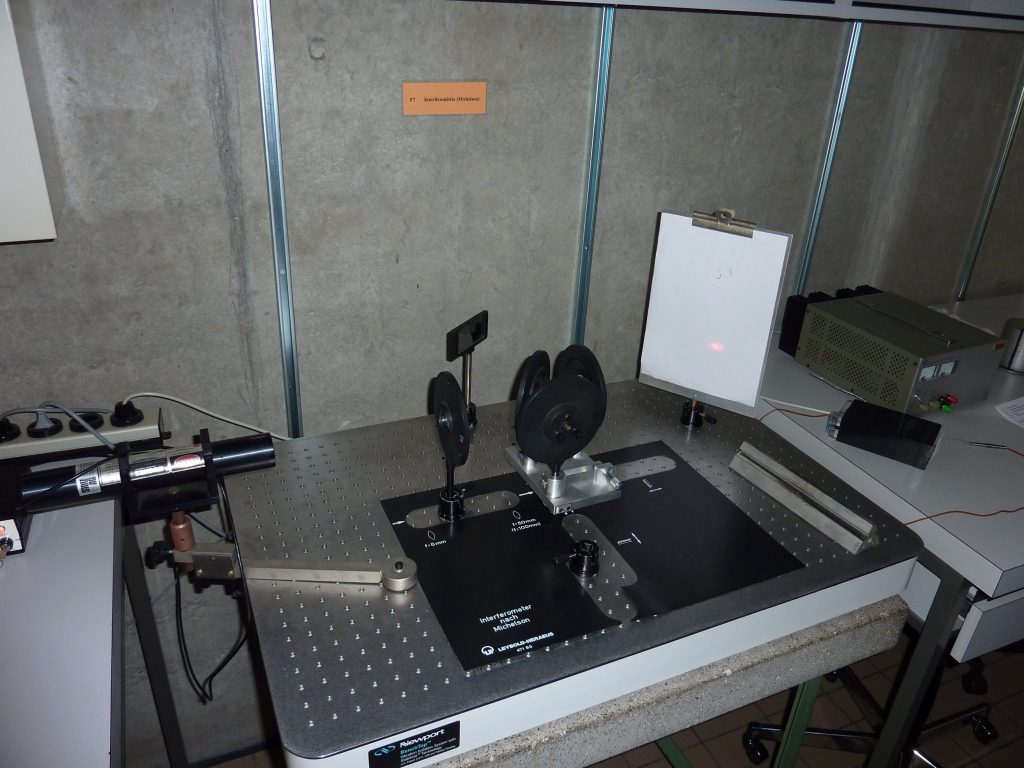
The purpose of this experiment is to get familiar with some properties of magnetic materials, and in particular with the hysteresis cycle and its characteristic quantities. Magnetic hysteresis occurs in ferromagnetic materials and accounts for energy losses that occur during a magnetic cycle. The hysteresis cycle illustrates the relationship between magnetization or magnetic induction and the applied magnetic field. Here different measurements are made using a transformer. The materials of the magnetic circuit can be changed and hysteresis studied when working in an open or closed magnetic circuit.
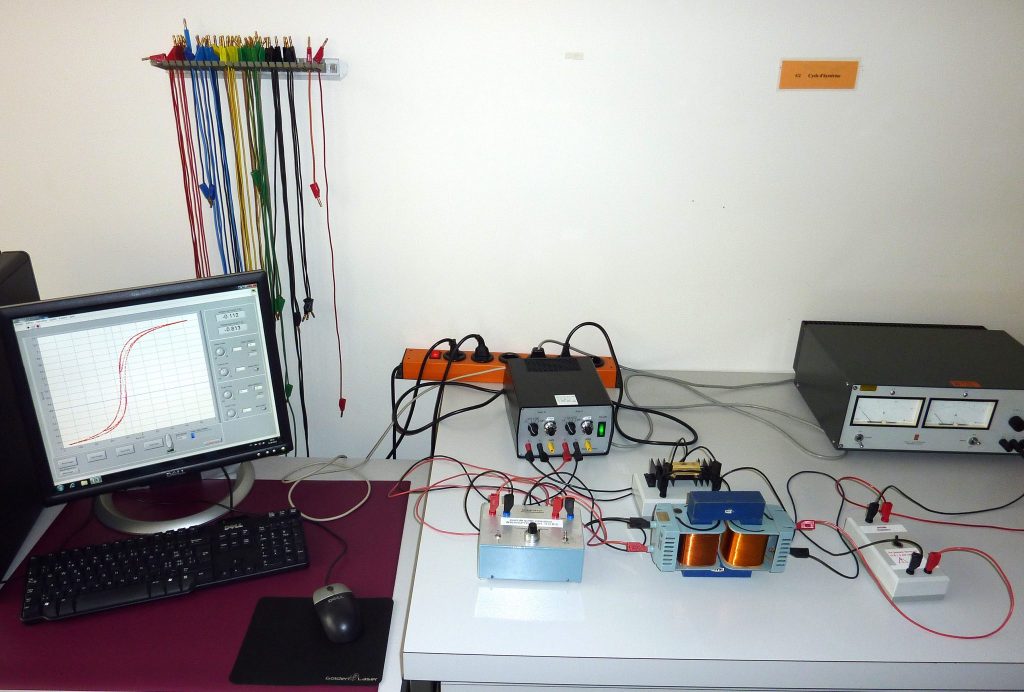
This experiment makes it possible to visualize an electron beam in an electromagnetic field. It therefore makes it possible to determine the electron’s specific charge e/m from measurements of the radius of the circular orbit of an electron beam in a magnetic field produced by Helmoltz coils. This experiment also allows us to visualize the strength of Lorentz on an electric charge.
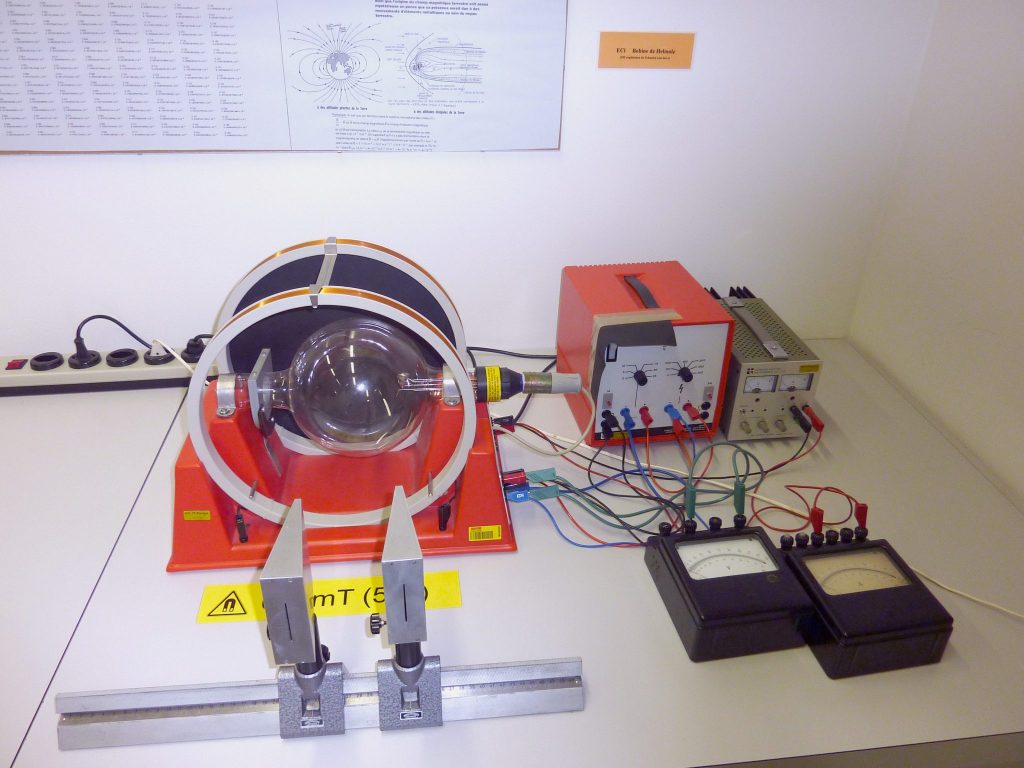
There are many applications of X-rays in physics, biology and medicine. An introduction to X-ray physics is therefore essential for any student undertaking scientific studies. This experiment deals with the origin of X-rays, their production and their interaction with matter.
The experiments proposed are those of diffraction and absorption of X-rays. Various monocrystalline and polycrystalline materials and powders are available.
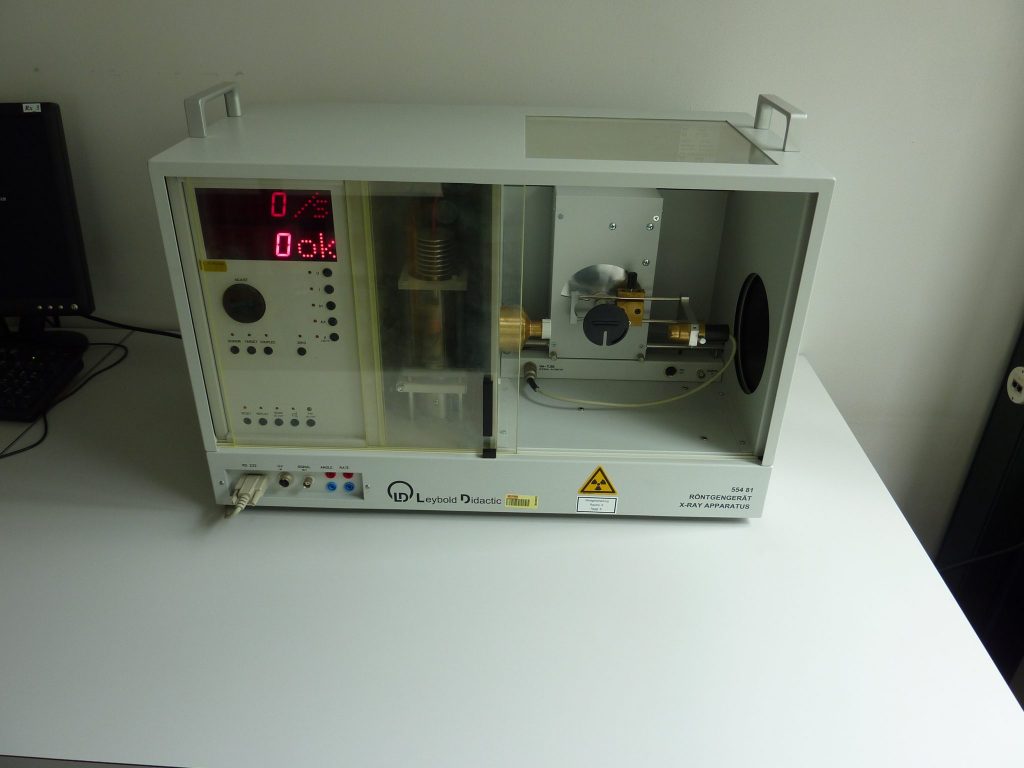
Vacuum is required in a vast majority of physics experiments. Its applications range from spaceships to the manufacture of vacuum microelectronic elements. The vacuum technique has become a real industrial discipline, which is of great benefit to researchers and laboratory technicians.
In this experiment, students first get familiar with the operation of the main vacuum elements such as pumps, valves, pressure gauges. They determine the effective flow rate (pumping kinetics) and the boundary pressure of a pallet pump and a diffusion pump. They learn how to calibrate a Pirani gauge for air and helium using the Kammerer manometer.
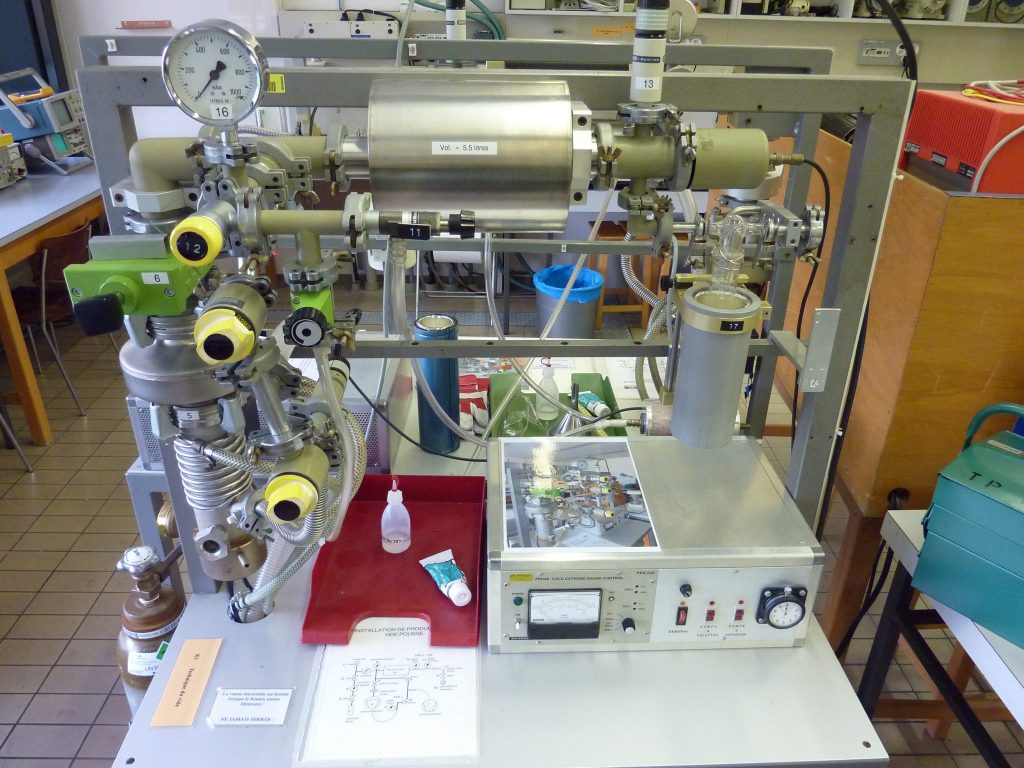
This experiment makes it possible to study the P-T diagram of nitrogen and in particular to determine its triple point. A thermally stabilised double-walled container is filled with nitrogen. The pumping system adjusts the pressure while a second nitrogen tank adjusts the tank temperature. The system allows to record a few points on the sublimation, vaporisation and melting curves and to determine their point of intersection: the triple point.
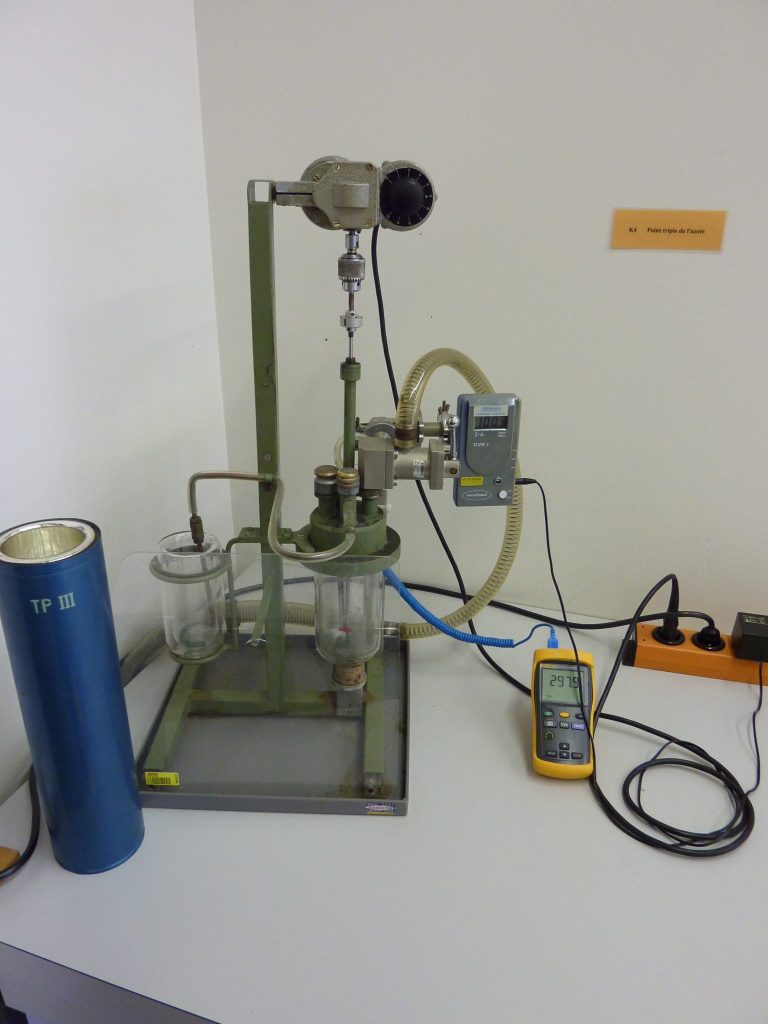
Evaporation of chemical elements or compounds is necessary for deposition of thin layers. In this experiment, it is proposed to use the Joule effect to heat a crucible in which metals such as gold or silver have been laid. These thin layers will be used to make a semi-transparent blade and a solar cell based on the Schottky barrier principle.
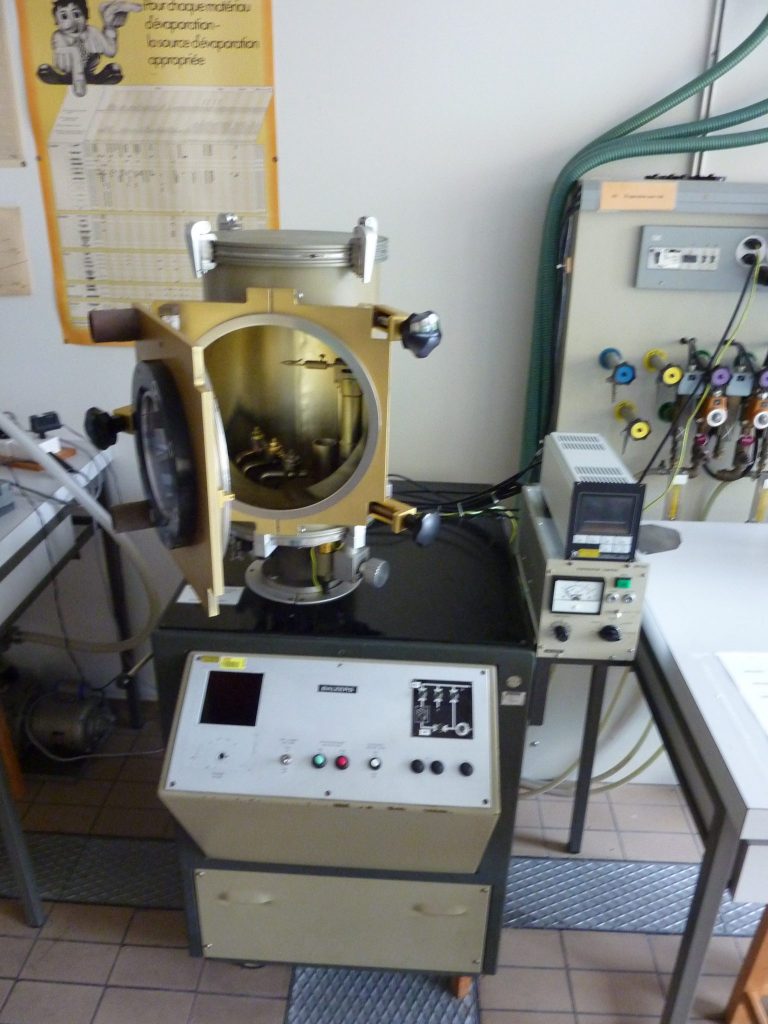
Contact
Daniele Mari
daniele.mari@epfl.ch